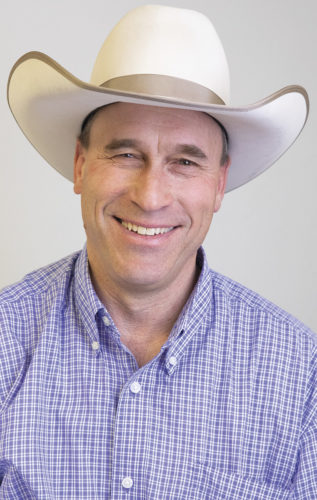So, we culled real deep that year, got rid of most of the older cows and bought a bunch of yearling heifers.
The plan was to breed the heifers and sell them the following winter or spring as bred heifers. It seemed like a pretty good plan, and it worked just as it was supposed to for three or four years.
With fewer cows, calving went smoothly, and we seemed to make a little money with the bred-heifer deal. Everything was going so well, in fact, that we must have decided the prosperity was more than we could handle.
In the winter of 2011-2012, we thought we had it all figured out. Cow numbers had been on the decline for years, calf prices were rising, and there was good demand for bred females.
That year, we put together a nice group of heifers, mostly out of Montana. Since we had this deal all figured out, a hallmark of most geniuses, we expanded the number of heifers we bred.
By the time we turned out on the mountain that summer, we had synchronized and bred 300 heifers. We usually start calving in March, but since demand seemed to dictate that most people in the market for bred heifers wanted earlier calves, we bred the sale heifers to start calving the first week in February.
The following fall, as corn prices and ethanol demand continued to climb, the residual effects on the demand for high-priced heifers did not bode well for those of us who were hoping to cash in on our two-thousand-dollar heifers, which were now worth considerably less. Not to worry, though. We’d move on to Plan B.
Yes, indeed. We had a contingency plan. We decided to keep the heifers, calve them out and sell them the next year as 3-year-olds. It wasn’t ideal, but we figured we could make it work for one year.
The word “irony” comes to mind at this juncture of the story. The very reason we were in the bred-heifer business was to avoid the train with no brakes that we were now strapping ourselves to.
It was as though I’d studied 100 years’ worth of Farmer’s Almanac weather charts and channeled my inner Nostradamus to determine when the coldest, snowiest, windiest three-week period of the harshest winter in 50 years would occur in the Oakley Basin in south-central Idaho.
That was the period in which I’d chosen to synchronize 300 heifers to calve. It could have been worse, but my imagination isn’t vivid enough to figure out how.
We were not set up for the ensuing wreck. As if the freezing blizzards and sleepless nights were not enough, after we got through the heifer calving period – just in time to start calving the older cows – a little ailment known as scours paid us a visit. It was impossible to keep up with the havoc this little epidemic wreaked.
Just like every other scours-induced train wreck I’ve endured, there seemed to be no answer. It was like a shot in the belly every day. Nothing takes the wind out of your sails like doctoring baby calves several times a day, for several days, only to watch them die anyway. The local coyotes lived like kings around the dead pile.
Nobody ever wants to let on just how bad a calving and scours wreck actually is. Amid the coffee-shop rumors, it’s a secret most cowboys guard like Colonel Sanders’ recipe. But I’ll let you in on the secret for the sake of the story. We ended up losing nearly a full third of those 300 heifers’ calves. I wouldn’t wish that experience on anyone.
As we head into another calving season this spring, I hope we’ve done everything, preparation-wise, to avoid any disasters. In the absence of such wrecks, there is no time of year I enjoy more than when the calves start coming. Oh, by the way, if you’re in the market for some bred heifers, I’ve got some for sale. FG











